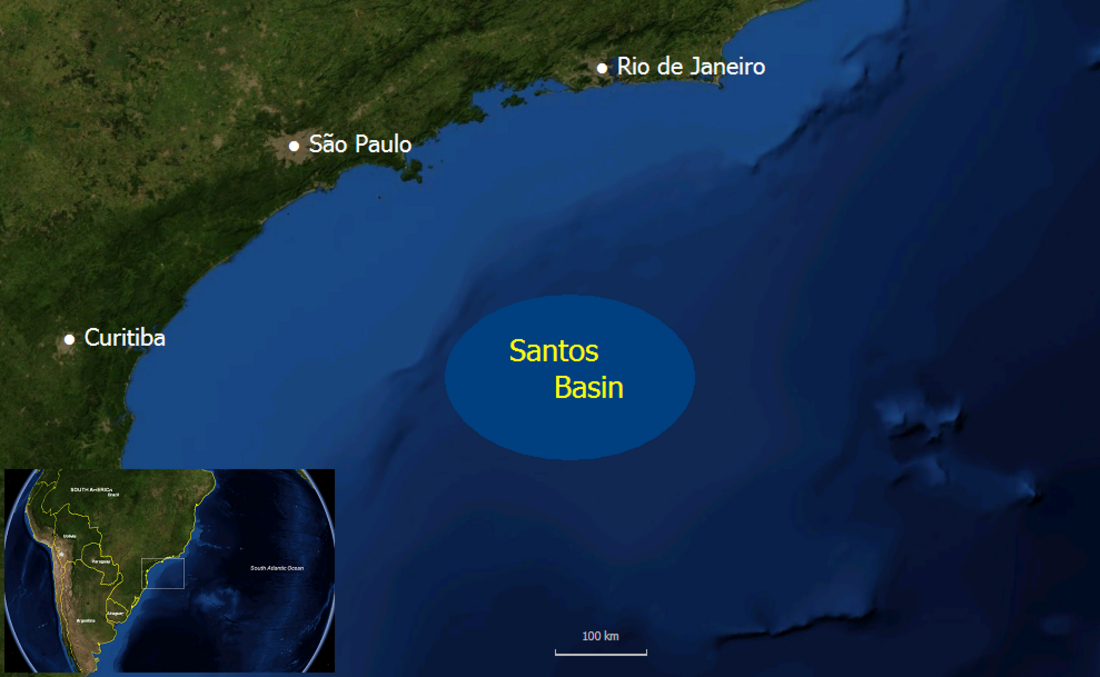Top Qs
Timeline
Chat
Perspective
Guarujá Formation
Geological formation of the Santos Basin near Brazil From Wikipedia, the free encyclopedia
Remove ads
The Guarujá Formation (Portuguese: Formacão Guarujá) is a geological formation of the Santos Basin offshore of the Brazilian states of Rio de Janeiro, São Paulo, Paraná and Santa Catarina. The predominantly calcarenite formation with marls dates to the Early Cretaceous period; Early Albian epoch and has a maximum thickness of 2,500 metres (8,200 ft). The formation is the second-most important post-salt reservoir rock of the Santos Basin.
Remove ads
Etymology
The formation is named after the city of Guarujá, São Paulo.
Description
The Guarujá Formation is 832 to 2,500 metres (2,730 to 8,202 ft) thick,[1] and consists of oolitic calcarenites, which laterally grade to greyish ochre and brownish grey calcilutites and grey marls. These facies are interbedded with the alluvial clastics of the Florianópolis Formation. The Guarujá name is restricted to the lowest limestone intercalation, previously named Lower Guarujá by Ojeda and Ahranha in Pereira and Feijó (1994). The microfacies indicate a tidal flat to shallow lagoon and open carbonate platform depositional environment. The age based on planktonic foraminifera and pollen is Early Albian.[2]
Petroleum geology
The formation is the second-most important post-salt reservoir rock of the Santos Basin,[3] after the Itajaí-Açu Formation.[4][5]
Remove ads
See also
References
Wikiwand - on
Seamless Wikipedia browsing. On steroids.
Remove ads

